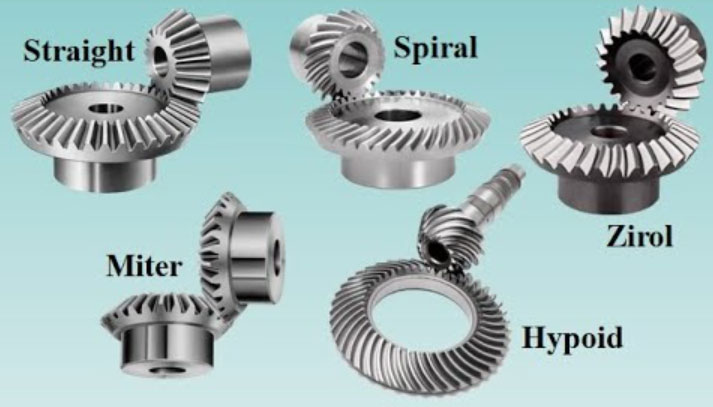Improving efficiency in power transmission systems is crucial for maximizing performance, reducing energy consumption, and minimizing losses. Bevel gears can contribute to enhancing efficiency in power transmission systems through various design considerations and optimization strategies. Here are some ways bevel gears can improve efficiency:

- Tooth Profile Optimization: The tooth profile of bevel gears plays a significant role in efficiency. Employing tooth profiles that minimize friction and sliding, such as spiral bevel gears or hypoid gears, can improve efficiency by reducing power losses and heat generation. These profiles facilitate smooth and gradual tooth engagement, resulting in lower frictional losses compared to straight-toothed bevel gears.
- Gear Geometry and Design: Optimizing the gear geometry and design parameters can enhance efficiency. Considerations include:
- Module and Gear Ratio: Selecting an appropriate gear module and gear ratio ensures that the gears are appropriately sized and matched for the desired application. Oversized gears can result in unnecessary weight and friction, while undersized gears may lead to excessive loads and reduced efficiency.
- Pressure Angle: Choosing an optimal pressure angle helps balance load distribution and contact stresses on the gear teeth. A suitable pressure angle minimizes friction and wear, thereby improving efficiency.
- Tooth Profile Modifications: Employing profile modifications, such as crowning or tip relief, can help compensate for misalignments, improve tooth contact, and reduce losses associated with misalignments.
- Surface Finish and Coatings: Applying suitable surface finishes and coatings on bevel gears can reduce friction, wear, and the likelihood of surface damage. Low-friction coatings, such as diamond-like carbon (DLC) coatings, can enhance the efficiency of gear meshing by minimizing frictional losses.
- Lubrication: Proper lubrication is critical for reducing friction, dissipating heat, and minimizing wear in bevel gear systems. Selecting high-quality lubricants with appropriate viscosity and additives is essential to achieve efficient power transmission. Regular lubricant maintenance and monitoring are necessary to ensure optimum lubrication conditions.
- Alignment and Tolerance Control: Accurate alignment of bevel gears during assembly and maintenance is essential for efficient power transmission. Misalignment can lead to increased friction, wear, and losses. Proper alignment techniques, including the use of alignment tools and measurements, help minimize misalignments and optimize gear meshing.
- Bearing Selection: Selecting high-quality bearings with low friction and high load-carrying capacity is crucial for reducing losses and ensuring efficient rotation of the bevel gears. Proper bearing lubrication and maintenance are also necessary to achieve optimum efficiency.
- System Optimization: Considering the overall system design and integration can further enhance efficiency. This involves optimizing the selection and configuration of other components, such as motors, shafts, and supporting structures, to minimize power losses and maximize system efficiency.
- Regular Maintenance and Monitoring: Implementing a comprehensive maintenance program that includes regular inspections, lubricant analysis, and performance monitoring helps identify and address any issues that may affect efficiency. Timely maintenance and corrective actions ensure that the gear system operates optimally and efficiently.
By incorporating these strategies, bevel gears can significantly improve the efficiency of power transmission systems. It is essential to consider the specific requirements and operating conditions of the application to optimize the gear design and maximize efficiency in each case.
